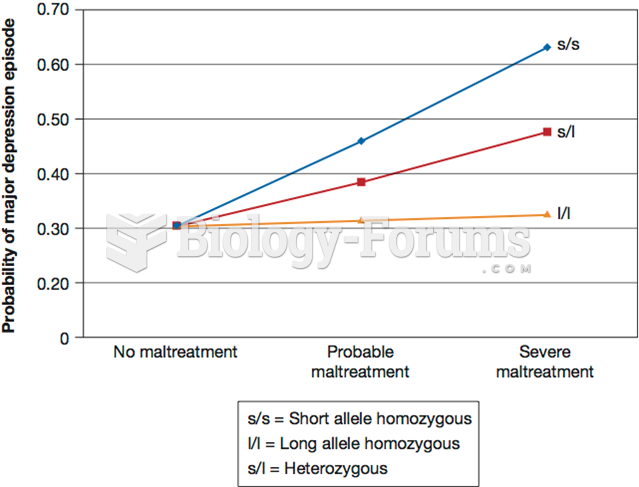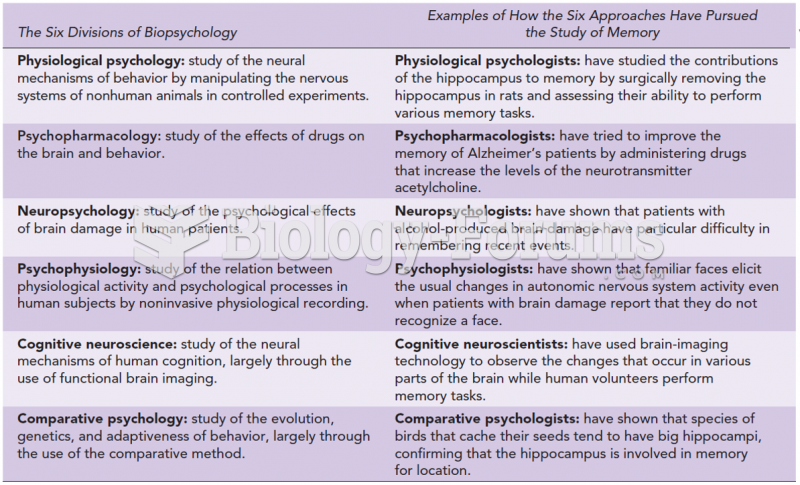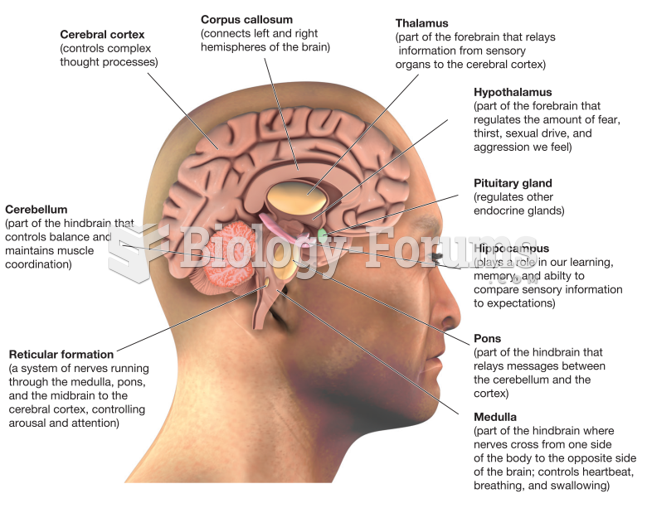|
|
|
The longest a person has survived after a heart transplant is 24 years.
The Centers for Disease Control and Prevention has released reports detailing the deaths of infants (younger than 1 year of age) who died after being given cold and cough medications. This underscores the importance of educating parents that children younger than 2 years of age should never be given over-the-counter cold and cough medications without consulting their physicians.
Human stomach acid is strong enough to dissolve small pieces of metal such as razor blades or staples.
Warfarin was developed as a consequence of the study of a strange bleeding disorder that suddenly occurred in cattle on the northern prairies of the United States in the early 1900s.
It is widely believed that giving a daily oral dose of aspirin to heart attack patients improves their chances of survival because the aspirin blocks the formation of new blood clots.
 Major features of Homo erectus include increased brain size, an angular vault, and cranial superstru
Major features of Homo erectus include increased brain size, an angular vault, and cranial superstru
 “Mission Accomplished” proclaimed the banner on the USS Abraham Lincoln, where on May 1, 2003, Presi
“Mission Accomplished” proclaimed the banner on the USS Abraham Lincoln, where on May 1, 2003, Presi





